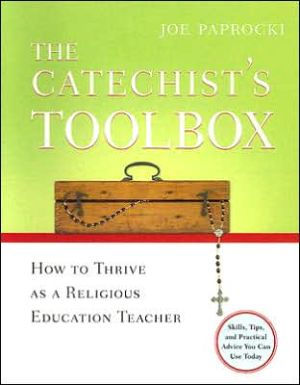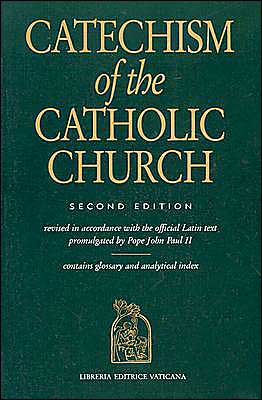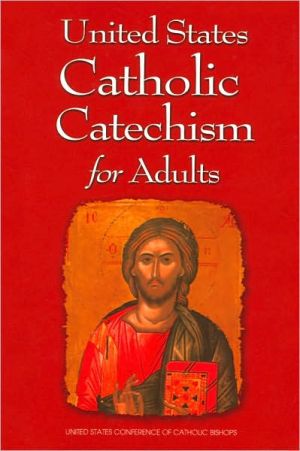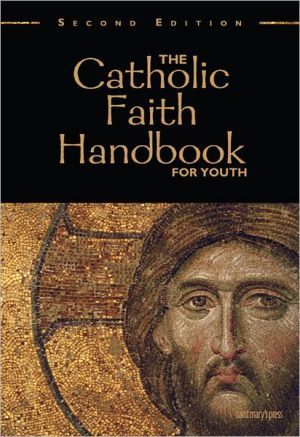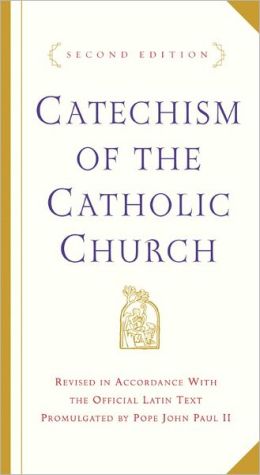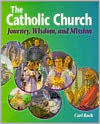The Catechist's Toolbox: How to Thrive as a Religious Education Teacher
Written specifically for any catechist who is new to the job or has never had any formal training, The Catechist's Toolbox features an invaluable collection of catechetical tips, techniques, methodologies, and advice. Throughout the book, master teacher Joe Paprocki shares the wisdom he has gleaned in two decades as a catechist, high school teacher, and religious educator. Employing the metaphor of a homeowner's toolbox, Paprocki explains how a new catechist is like a do-it-yourself builder...
Search in google:
Build up your skills and confidence with the right tools!Each year, roughly one-third of the more than five hundred thousand volunteer catechists in Catholic parishes are new to the job. Most of these catechists receive little formal training for their work, yet it is vitally important that they know how to prepare a lesson, lead a discussion, supervise children, apply discipline, and help kids grow in the faith.The Catechist's Toolbox is an invaluable collection of methodologies, techniques, and tips that provide on-the-job training for any new catechist. Master teacher Joe Paprocki shares the wisdom he has gleaned in two decades as a catechist, religious educator, and high school teacher. Employing the metaphor of a homeowner's toolbox, Paprocki explains what every catechist must know and do to develop the skills he or she will need in order to thrive as a religion teacher for many years to come.Visitcatechistsjourney.comIn addition to the wealth of suggestions in The Catechist's Toolbox, readers can get specific answers to their questions about catechesis and other faith-related topics by visiting Joe's blog, Catechist's Journey, atcatechistsjourney.com.
A catechist is a person who facilitates the process of faith formation. This is done first by echoing the word of God in his or her own life, and second by helping others to do so. Please know that you are not easily replaced. Although there may be a half-million volunteer catechists in the United States, you are part of a select community of people in the church who are dedicated to sharing the Good News of Jesus Christ in a formal setting. Through your work with adults, families, adolescents, and children, you are passing on a lived faith. Introduction On-the-Job Training Imagine that you are moving into a house or an apartment. There’s a great deal of work to be done, isn’t there? Aside from moving all your personal belongings and furniture, you find that there are many repairs and improvements to be accomplished before you can move a single thing into your new home. If you’re like most people, you compromise: some of the work gets done by professionals, while much of it is accomplished by you with on-the-job training.\ At one time or another, all of us have tried to undertake some home repairs by ourselves. Manuals can be very helpful in assisting the novice home-repair person in tackling some projects that otherwise would require much more time and money if handled by a professional. By following the step-by-step instructions, we are able to do some minor plumbing, electrical work, and even construction. Accomplishing these tasks, however, is not a reason to give up our day jobs. To be certified as a professional plumber, electrician, or construction worker takes a great deal of time, experience, studying, and preparation.\ On-the-Job Training for Catechists As catechists, many of us find ourselves face-to-face with challenges for which we have had no formal training. Most of us are not professional schoolteachers with training in methods and skills for classroom management. What are we to do? For the most part, we will have to discover on our own how to handle certain situations and challenges. Like a home-improvement manual, The Catechist’s Toolbox is a do-it-yourself manual to provide you, the volunteer catechist, with on-the-job training and assistance.No Shortcuts!\ The truth is, in order to be an effective catechist, you need more than good intentions. Think about it: electricians and plumbers must complete thousands of hours of training before being certified. It makes sense that catechists—people who are entrusted with the spiritual formation of children, young people, and adults—should likewise be required to complete training and formation leading to certification in their local diocese. The Catechist’s Toolbox is not meant to be a substitute for formal catechetical formation and training. Rather, it is meant to complement such preparation so that you can become the effective catechist that God is calling you to be.Chapter One Shop-talk: The Language of Catechesis I enjoy browsing around the local home improvement/hardware megastore, allowing myself to get lost in the vast array of gizmos, gadgets, and thingamajigs. I’ve just tipped my hand to a problem that I have—I don’t always know the correct names of the items that I’m looking for. Often, when a store worker comes up to me and asks if I need some help, I feel embarrassed. I know what I’m looking for but I don’t know the correct name. Relying on gestures to describe the shape, size, and purpose of the item I need, I end up feeling like I don’t speak the same language as the worker. Eventually, he or she figures out what it is that I’m looking for, the purchase is completed, and I can get back to my home improvement project.\ The Language of Faith Formation Home improvement has a language of its own. The same is true of faith formation. In fact, in many ways, the church has a language of its own.\ For our purposes, we need to become more familiar with the language of faith formation, or catechetical language.“Catechetical materials . . . should encourage and assist in the development of a common language of faith within the Church.”\ National Directory for Catechesis, 70a The church seems to like big words. Here are a few you probably don’t use in everyday conversation! \ ? Ecclesiology ? Episcopacy\ ? Evangelization ? Sanctification \ ? Magisterium ? Ecumenism\ ? Transubstantiation In decades past, the church did such a good job of teaching us a language of faith formation for children (CCD) that we are still having a difficult time of growing beyond this term.\ Since the Second Vatican Council, the church has been emphasizing a different set of words in relation to faith formation or religious education. Notice that I did not refer to these words as new. The fact is, the words that the church is now using when it comes to faith formation are words that are actually quite ancient. They may seem new to many of us but to the church, they are more like antiques.\ It doesn’t take a rocket scientist to realize that all of these words derive from the same root word—the Greek word katakein meaning “to echo” or “to sound again.” When one person echoes another, it means that he or she is imitating or reflecting back what that person has said or done. So what do each of these words mean?Do you know what CCD stands for?\ Confraternity of Christian Doctrine catechismcatechesiscatechistcatechumenatecatechumen A catechism is a written summary of the church’s understanding of God’s word as revealed through Scripture and Tradition. In a sense, a catechism is the WHAT of our beliefs as Catholics. For many centuries, it was customary for children to “learn their catechism,” often through a question-and-answer format known as the Baltimore Catechism. Today, the Catechism of the Catholic Church (1992) is the official source for Catholic teaching, intended as the principle resource for bishops and catechetical ministers.\ Catechesis is the process of transmitting the gospel. To help us understand this process, the church has given us the General Directory for Catechesis (1997) and the National Directory for Catechesis (2005). These documents help us to understand the HOW of catechesis.\ A catechumen is an adult (or child of catechetical age) who is preparing for baptism. Each Lent, we pattern our lives in such a way as to journey with the catechumens to baptism. Like them, we pray, fast, and give alms as we strive to surrender ourselves to the grace of the death and resurrection of Jesus. The catechumens teach all of us about the desire, commitment, and discipline needed to be a disciple of Jesus.\ The catechumenate is the formal period of preparation for catechumens who are preparing for the Sacraments of Initiation—Baptism, Confirmation, and the Eucharist. Through the catechumenate, those preparing for initiation into the church receive formation and catechesis from catechists and sponsors, which help them enter more deeply into the Catholic way of life.\ A catechist is a person who facilitates the process of faith formation, first by echoing the word of God in his or her own life and second by helping others to do so. Please know that you are not easily replaced. Although there may be a half-million volunteer catechists in the U.S., you are part of a select community of people in the church who are dedicated to sharing the Good News of Jesus Christ in a formal setting. Catechists work with adults, families, adolescents, and children, passing on a lived faith.For the average adult Catholic, the bishops of the United States have provided the Compendium of the Catholic Catechism (2006—a synopsis of the Catholic faith in a question and answer format reminiscent of the Baltimore Catechism but for adults) and the United States Catholic Catechism for Adults (2006—an adaptation of the Catechism of the Catholic Church with stories, teachings, sidebars, cultural applications, reflection questions, and prayer). Whatever happened to CCD?\ So, why use the term catechesis when we had just gotten used to the term CCD? The fact is, CCD primarily refers to something that is for children, as well as something that one completes after a given time of study. Today, we have retrieved the notion of catechesis to capture the broader mission of the church to proclaim the gospel to all people: adults, youth, and children—in order to “put people in communion with Jesus Christ” (Catechism of the Catholic Church #426)—a task that is lifelong. The catechumenate is the formal period of preparation for catechumens who are preparing for the Sacraments of Initiation—Baptism, Confirmation, and the Eucharist. Through the catechumenate, those preparing for initiation into the church receive formation and catechesis from catechists and sponsors, which help them enter more deeply into the Catholic way of life.\ A catechist is a person who facilitates the process of faith formation, first by echoing the word of God in his or her own life and second by helping others to do so. Please know that you are not easily replaced. Although there may be a half-million volunteer catechists in the U.S., you are part of a select community of people in the church who are dedicated to sharing the Good News of Jesus Christ in a formal setting. Catechists work with adults, families, adolescents, and children, passing on a lived faith.Ever heard of the RCIA?\ This acronym stands for the Rite of Christian Initiation for Adults. The RCIA is another name for the catechumenate. You Have a Vocation The church makes it quite clear that to be a catechist is to have a vocation. The General Directory for Catechesis tells us that “The Church awakens and discerns this divine vocation and confers the mission to catechize. The Lord Jesus invites men and women, in a special way, to follow him, teacher and formator of disciples” (GDC 231). Throughout this book, I use the term catechist to refer to those who serve in the parish religious education program as well as those who serve as teachers of religion in Catholic schools.A Catechist’s Role Description As a catechist, you pray for grace and, no doubt, wonder at times what qualifies you to serve in this ministry. The fact is, you’ve been called because you exhibit (or show potential for developing) the following qualities and skills:\ Qualities of an Effective Catechist \ > a desire to grow in and share faith\ > an awareness of God’s grace and the desire to respond to that grace\ > a commitment to the church’s liturgical and sacramental life and moral teachings\ > a strength of character built on patience, responsibility, confidence, and creativity\ > a generosity of spirit, a respect for diversity, and a habit of hospitality and inclusion Knowledge and Skills of a Catechist\ > a basic understanding of Catholic teaching, Scripture, and Catholic Tradition\ > honest and caring relationships with young people\ > effective teaching techniques and strategies If you are a Catholic schoolteacher, you are responsible for teaching a variety of subjects throughout the day. Faith formation, however, is more than a subject to be taught—it is an invitation to a way of life. By referring to you as a catechist, I want to recognize and affirm your vocation to form disciples of Jesus. To be referred to as a catechist is an honor that the church bestows only on those who have this vocation.\ Expanding Our Vocabulary Words are very powerful. The Gospel of John refers to Jesus as “the Word made flesh” (John 1:14). The language of faith formation is not just a matter of semantics. By using the most appropriate words to describe who we are and what we do, we deepen our own understanding of our share in Jesus’ ministry. As catechists, we assist pastors and bishops in guiding people to a living faith. This living faith has a language all its own. We can begin to learn the language of faith by referring to who we are and what we do with the proper terms. Scripture“In the beginning was the Word,\ and the Word was with God,\ and the Word was God. . . .\ And the Word became flesh\ and made his dwelling among us,\ and we saw his glory,\ the glory as of the Father’s only Son,\ full of grace and truth.” \ (John 1:1, 14)PrayerLord Jesus, Word made flesh, thank you for\ inviting me to proclaim you to others. Thank you\ for filling my life with your word. Help me to speak a language of faith that will help others to recognize you in their lives and deepen their relationship with you. May your Word echo within my heart and within the hearts of those I teach. Amen. For an opportunity to companion with other catechists and to nourish our vocation, visit catechistsjourney.com.
Acknowledgments ixIntroduction xiShop-Talk: The Language of Catechesis 1Blueprints: Planning and Preparation 7Socket and Wrench Set: Finding Activities That Fit 13Color Charts: Selecting Learning Activities 17Different Types of Wood: Adapting to Learning Styles, Special Needs, and Diversity 25Drop Cloths: Preparing for Things That Can Go Wrong 35Applying Primer: Preparing the Learning Environment 43Spotlights: Shifting the Focus onto Learners 51Extension Cords: Plugging into the Power of Prayer 57Sandpaper: Smoothing Out Discipline Problems 71Furniture Polish: Polishing Your Technique 81Instruction Manuals: Using Textbooks and Catechist Manuals 89Samples and Illustrations: Looking to the Bible for Vision 95Power Tools: Using Technology 101Scrapers: Using Questions to Get beneath the Surface 109Tape Measures: Assessing Progress 115Apprenticeship: Teaching and Learning by Doing 123Conclusion: Looking for Results 131A Guided Reflection 132Reliable Catholic Web Sites 134
